Engaging in thoughtful dialogue that taps into and responds to a prospect’s needs can be the difference between a relationship that accelerates forward or idles.
A well-thought-out, thorough discovery call isn’t a one-sided endeavor. Rather, the call should be driven by considerate questions that act as guideposts in uncovering what it is exactly that will check off the requisite boxes for a potential customer.
Engaging in thoughtful dialogue that taps into and responds to a prospect’s needs can be the difference between a relationship that accelerates forward or idles.
A well-thought-out, thorough discovery call isn’t a one-sided endeavor. Rather, the call should be driven by considerate questions that act as guideposts in uncovering what it is exactly that will check off the requisite boxes for a potential customer.
That much is evident in surveying local tech scenes. Take for example, one enterprise account executive at UPshow. He suggests asking self-directed questions to help unlock success. Meanwhile, a team member at Keeper Security always keeps the impact of a strong closing question top of mind. According to a senior account executive at Returnly, an empathetic attitude can lead to an effective line of inquiry.
What are the following sales pro's favorite and most effective discovery call questions? While they have their respective preferences, they share a mutual appreciation for one thing: prioritizing the prospect.
How to enhance your discovery call
- Put in the prep
- Embrace empathy
- Generate authentic and vulnerable responses
- Elevating conversations off the bat
- Understand prospects' challenges
- Gather key details
- Finish strong
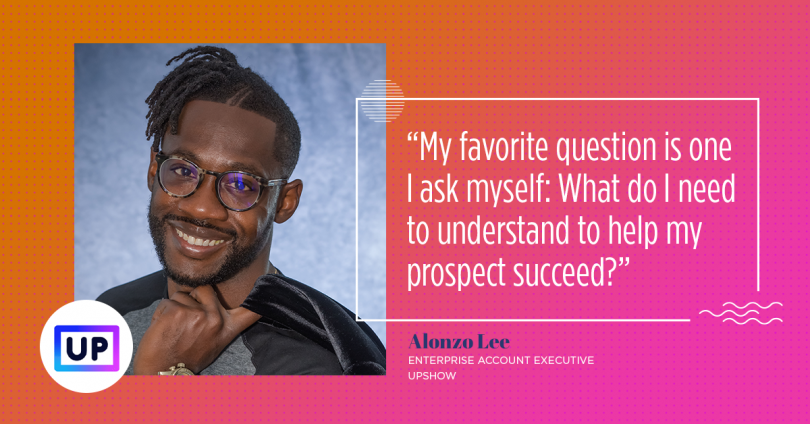
Put In The Prep
“My favorite and most effective discovery call question isn’t one I ask clients — which surprises everyone the first time I tell them. My favorite question is one I ask myself: What do I need to understand to help my prospect succeed?
This isn’t a simple question to answer. It takes a lot of research on my part. The preparation that comes out of that question drives my success not just in closing deals (which is great), but also in forming relationships with my prospects beyond just business.
I like to dissect this question in pieces. I start with as much market research as possible. Armed with that information, I set a goal for the call. If I can’t come up with a specific goal and I don’t understand something about my prospect, then how can I help them achieve greater success? If I determine the right goal from the start, then I benefit the prospect (in that I’m adding value for them) and myself (in that I’m not disappointed by what I think is failure).
Is this a lot of upfront work? You bet. But it all pays off in the end. When I prove to my prospects that I understand their business needs, I form quicker connections and deeper relationships — and ultimately, that’s what it’s all about.”
Alonzo Lee is an enterprise account executive at adtech company UPShow.

Embrace Empathy
“My favorite, most effective discovery call question is: What does a successful partnership look like for your role and ideally how will it impact your job?
Oftentimes, as sales people, we get so wrapped up in how our product will impact a business, but it lacks a personal touch. By understanding who you are speaking to and what they truly care about during the evaluation process, you can identify areas to focus on as you sell your product to someone who then, hopefully, is going to also be selling your product internally as well.
The best part of my job is helping people. This simple discovery question helps you gain perspective on your prospect’s role and focus on how you can provide impactful solutions to make their job and life easier. Once you establish this, then they can truly become your champion and work with you to achieve a partnership.”
Cody Bludorn is a senior account executive at returns platform Returnly.
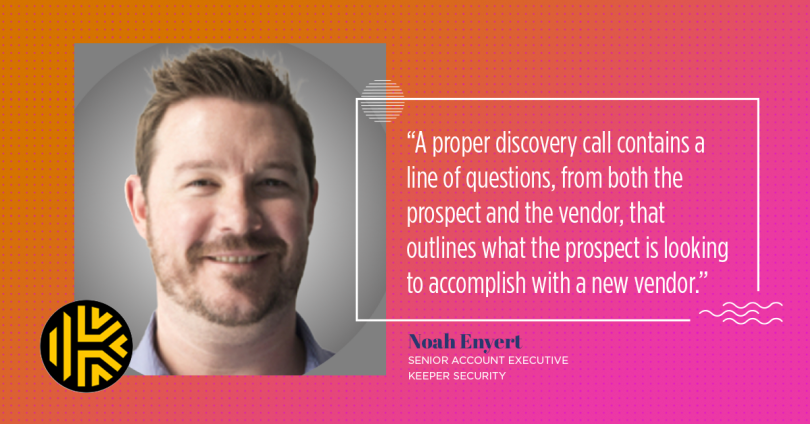
Finish Strong
“A proper discovery call contains a line of questions, from both the prospect and the vendor, that outlines what the prospect is looking to accomplish with a new vendor. It accounts for a corresponding timeline and next steps in the pursuit of partnership.
As the discovery call is designed to set up these next steps, an open line of communication is crucial for the prospect to trust that the vendor understands what the prospect needs and has the prospect’s best interest in mind. Once and only when that level of trust is established can a vendor take professional next steps with a prospect.
If this discovery call has been executed properly, an effective closing question can be posed, leaving all parties comfortable and confident in deciding whether or not the prospect’s needs, wants and desires have been addressed.”
Noah Enyert is a senior account executive at cybersecurity provider Keeper Security.
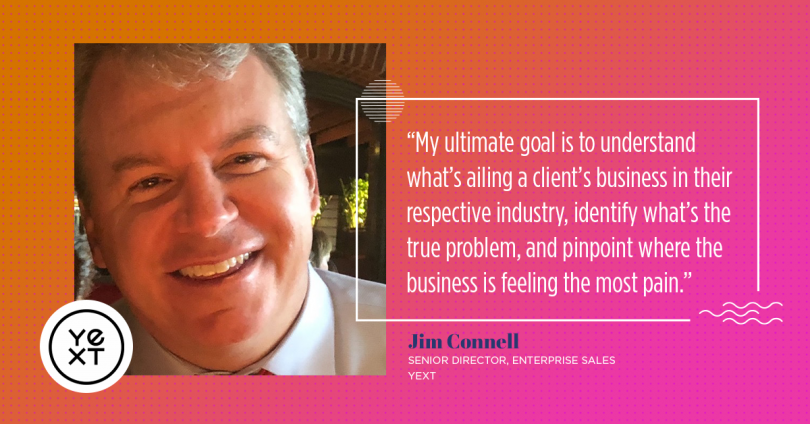
Generating Authentic and Vulnerable Responses
“The discovery question I find most effective is, ‘What’s the business problem you’re trying to solve, and why and how is it impacting the company financially?’” Connell said. “At Yext, we work with businesses and organizations in a wide variety of industries to transform and modernize the search experiences they provide their customers. My ultimate goal is to understand what’s ailing a client’s business in their respective industry, identify what’s the true problem, and pinpoint where the business is feeling the most pain. The above question enables me to do that.
“My first step on a discovery call is to identify the client’s problem. One tactic that I’ve found to be most effective here is probing and asking follow-up questions, which allows the client to provide as much detail as possible. After I’ve identified the problem, I like to ask how it occurred. Understanding the ‘how’ can sometimes help narrow down the source of the problem — was it people-related, a broken process or maybe even a technology issue? I have found that this question typically generates the most authentic and vulnerable responses from clients and sheds light on how this problem is affecting the client and their business. From there, I like to dive deeper into how this problem is financially impacting the organization, which is the final piece of the discovery puzzle. I always close client meetings by emphasizing how my solution can not only solve their business problem but how it can drive a measurable return on investment and address the financial gap they’ve identified.”
Jim Connell is the senior director of enterprise sales at Yext, a software company that helps businesses provide the official answer to customer questions through the Yext Search Experience Cloud.
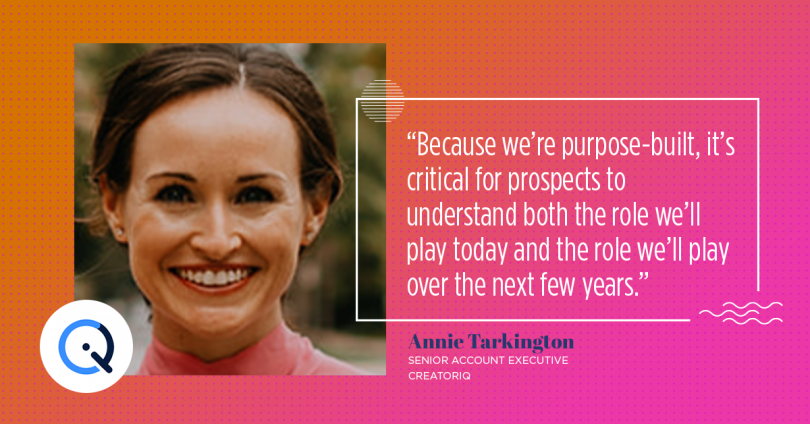
Elevating Conversations Off the Bat
“My favorite and most effective discovery question is, ‘How do you see influencer marketing supporting your organization’s strategic business and/or greater marketing goals for 2021 as well as over the next two to three years?’” Tarkington said.
“This question helps me elevate conversations right off the bat and attach our solution to the organization’s top goals and priorities. Because CreatorIQ is purpose-built for large global deployments and long-term growth, it’s critical to understand not only the role we play today but also the role we’ll play over the next few years.
“What’s interesting is that this question has become even more effective over recent months because influencer marketing strategies are evolving from tactical, one-off partnerships (managed in silos) to a more fundamental component of digital customer experience strategies that span across multiple business units and are capable of driving real business impact.
“The nature of our business has become much more strategic and impactful as the influencer space has evolved, so it is critical to uncover and align our solution to these initiatives in order to open the right doors, unlock budgets and increase the stickiness of the CreatorIQ solution.”
Annie Tarkington is a senior account executive at CreatorIQ, a cloud solution that helps organizations manage and optimize their influencer campaigns at scale.
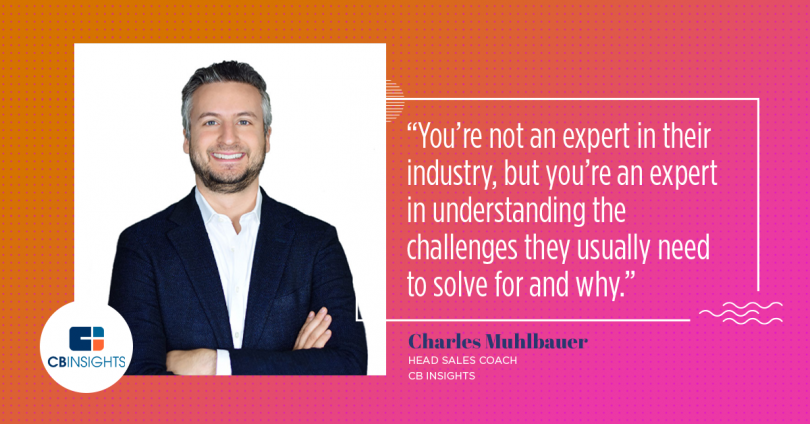
Understanding Prospects’ Challenges
“My favorite thing to do during discovery is to raise potential issues the prospect either has not thought about at all or has thought about in the past but not to the extent they should,” Muhlbauer said. “That might look something like: ‘For context, as part of my role, I speak with similar teams on a daily basis, and as you can imagine, they share a variety of challenges or goals they’re looking to solve for when it comes to XYZ (insert ultimate goal you help with). A few that come to mind are A, B, C and D (insert the challenges clients share with you which your company looks to solve). Curious to what extent any of these resonate with you, and if not, what might come to mind?’
“This type of question encourages the prospect to start thinking about real potential issues. It also indirectly communicates that you’re familiar with their world. You’re not an expert in their industry, but you’re an expert in understanding the challenges they usually need to solve and why. If the challenges you’ve shared resonate with the prospect, you have a shoo-in to a deep conversation. If none of the issues resonate, it’s probable they may not be a client now, but they won’t forget about what you discussed.”
Charles Muhlbauer is a head sales coach at CB Insights, a big data company that uses machine learning, algorithms and visualizations to help corporations answer questions about growth, competition, markets and technology.
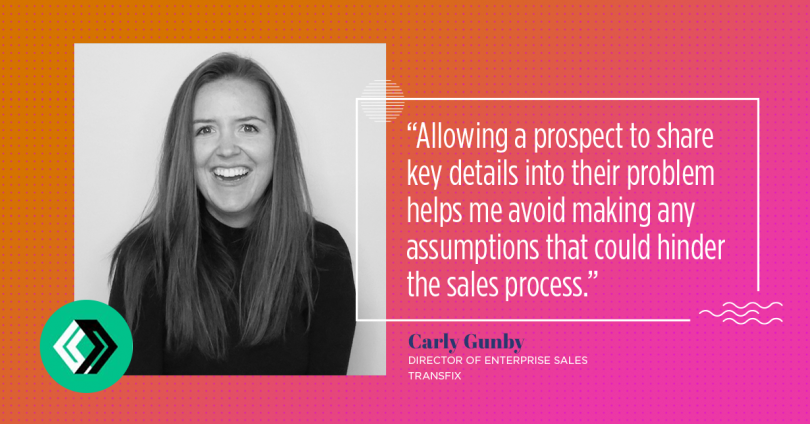
Gathering Key Details
“My favorite and most effective question to ask on a cold call is, ‘What are your three biggest challenges today?’” Gunby said. “I like this question because it taps into the prospect’s emotional side. Most salespeople will immediately respond with, ‘This is how we can solve this problem for you!’ but I like to dig deeper and find out why they’re having these problems. I then ask follow-up questions like, ‘Why do you think this is the problem? How long has this been happening? How much of your time does it take when this issue comes up?’ Allowing a prospect to share key details into their problem — which I’ve found many are eager to do, especially now that we’re in a pandemic — helps me avoid making any assumptions that could hinder the sales process.”
Carly Gunby is the director of enterprise sales at freight marketplace Transfix.
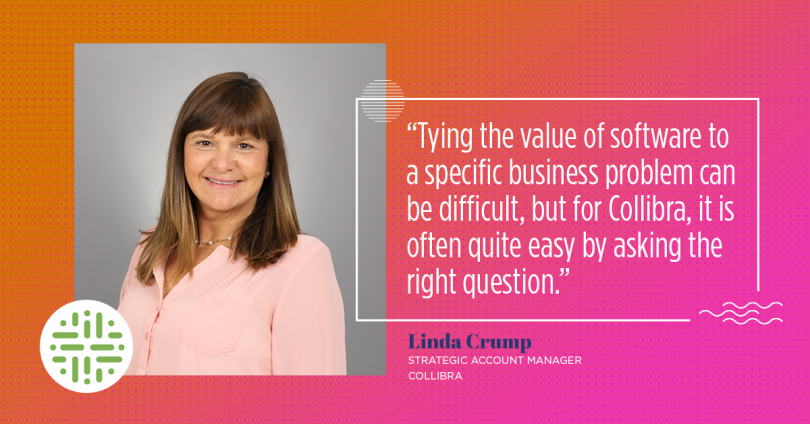
Eliciting a Passionate Response
“My favorite and most effective discovery call question is, ‘[Mr. or Mrs. Prospect], how often do you find yourself in a meeting where you’re spending huge amounts of time trying to decide whose data right?’” Crump said. “The reason I love this as a discovery question is that it usually elicits a passionate response and allows the conversation to move in a powerful direction around how Collibra has solved this problem for hundreds of clients. Tying the value of software to a specific business problem can be difficult, but for Collibra, it is often quite easy by asking the right question. Business people want this problem solved, but historically have not had the tools to allow them to do so. I love sharing how Collibra can help.”
Linda Crump is a strategic account manager at Collibra, a software company that aims to help organizations unlock the value of their data and turn it into a strategic, competitive asset.
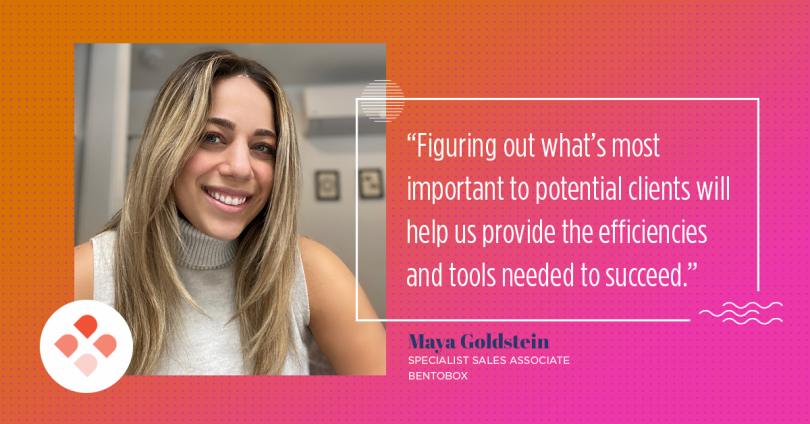
Figuring Out What’s Important
“The discovery call question I find most effective is, ‘What would make today’s call with me most valuable for you?’” Goldstein said. “This question really encourages the prospect to think about what’s important to them. Consequently, listening to their answer could open an entire pandora’s box of the aspects of their business that truly need our help.
“My job is to identify areas where BentoBox can help support and provide value to restaurants and restaurateurs and their everyday operations, so figuring out what’s most important to them will help us provide the efficiencies and tools needed to succeed.”
Maya Goldstein is a specialist sales associate at BentoBox, a platform that offers restaurants tools to help drive high-margin revenue directly through their website.




